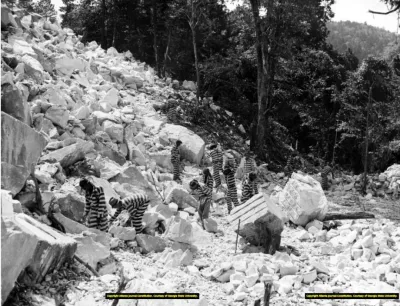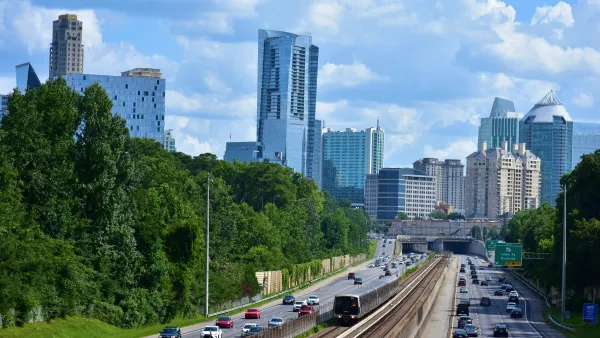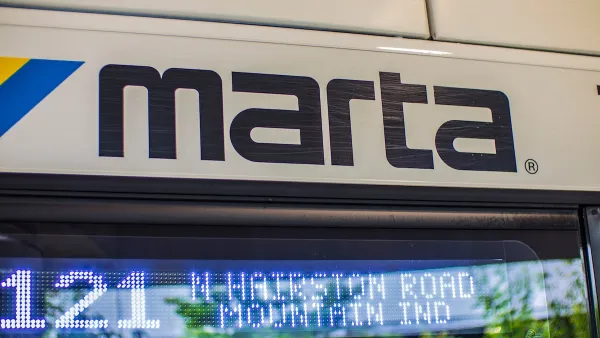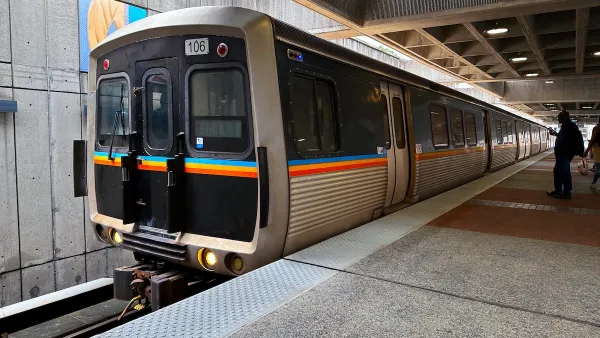Two monuments coming to Atlanta reckon with the city's history of using incarcerated laborers.

The history of Atlanta is set in brick.
It began after the Civil War, when slavery gave way to another form of labor: convict leasing. Black people, many of them children, were arrested for such “crimes” as talking loudly in the company of a white woman or not stepping off the sidewalk when a white person approached. Private companies would then lease these incarcerated people for unpaid labor in inhumane conditions.
“It’s one of those pieces of history that nobody really knows about,” says Donna Stephens, an environmental activist in Atlanta. “There’s so many people that I’ve spoken to that are just in shock about that part of American history. [To them] it’s as if slavery ended and [Martin Luther King Jr.] showed up.”
One of the outfits that profited off convict labor was the Chattahoochee Brick Company in Atlanta. For 30 years, workers there made 200,000 bricks a day—the very bricks that built the city during a formative period. These bricks are throughout downtown and in older buildings and sidewalks, says Douglas A. Blackmon, author of a Pulitzer Prize-winning book on convict leasing. The workers, 30% of whom were children, were whipped, fed rotting food and warehoused in substandard housing. Some were worked to death.
Years later, Atlanta is beginning to reckon with its history of convict labor and the role it has played in not only the city but throughout the South. Plans exist to memorialize the former site of Chattahoochee Brick and at the recently opened Westside Park a few miles away.
Atlanta will be the first city to acknowledge convict labor on a large scale.
FULL STORY: Atlanta Reckons with the Convict Labor that Built the City

Analysis: Cybertruck Fatality Rate Far Exceeds That of Ford Pinto
The Tesla Cybertruck was recalled seven times last year.

National Parks Layoffs Will Cause Communities to Lose Billions
Thousands of essential park workers were laid off this week, just before the busy spring break season.

Retro-silient?: America’s First “Eco-burb,” The Woodlands Turns 50
A master-planned community north of Houston offers lessons on green infrastructure and resilient design, but falls short of its founder’s lofty affordability and walkability goals.

Test News Post 1
This is a summary

Analysis: Cybertruck Fatality Rate Far Exceeds That of Ford Pinto
The Tesla Cybertruck was recalled seven times last year.

Test News Headline 46
Test for the image on the front page.
Urban Design for Planners 1: Software Tools
This six-course series explores essential urban design concepts using open source software and equips planners with the tools they need to participate fully in the urban design process.
Planning for Universal Design
Learn the tools for implementing Universal Design in planning regulations.
EMC Planning Group, Inc.
Planetizen
Planetizen
Mpact (formerly Rail~Volution)
Great Falls Development Authority, Inc.
HUDs Office of Policy Development and Research
NYU Wagner Graduate School of Public Service




























